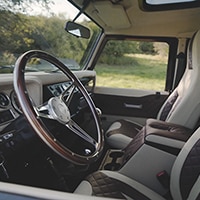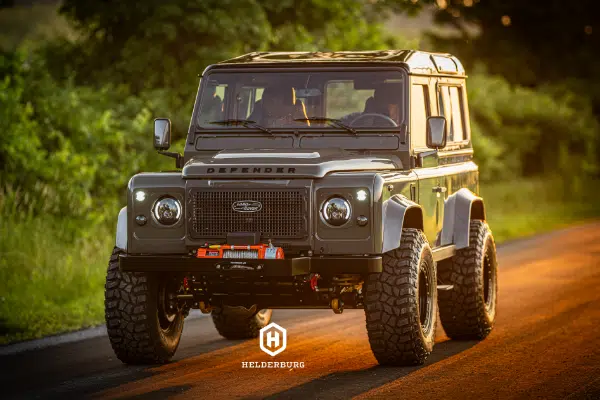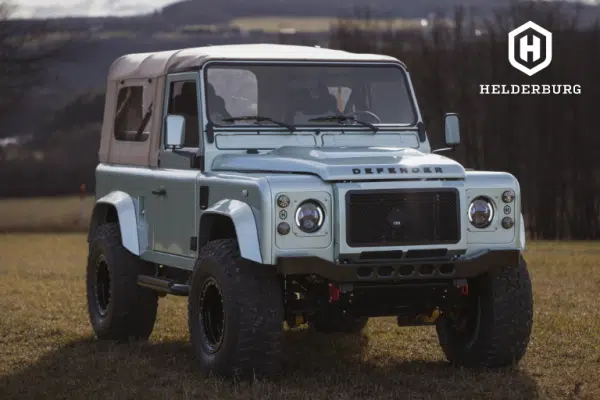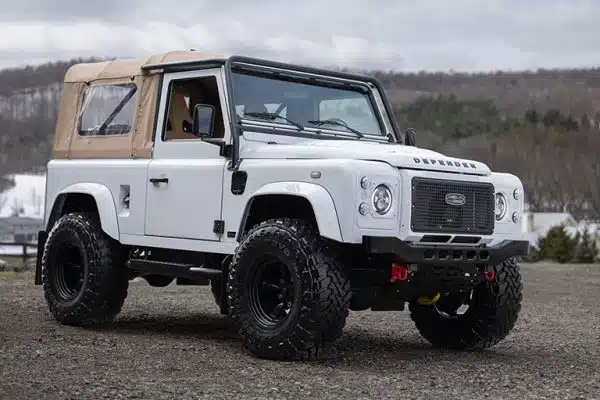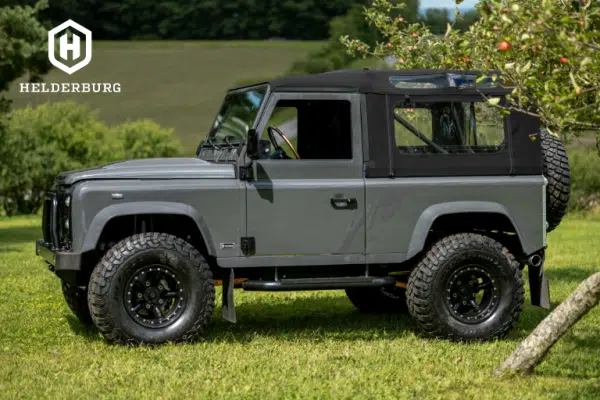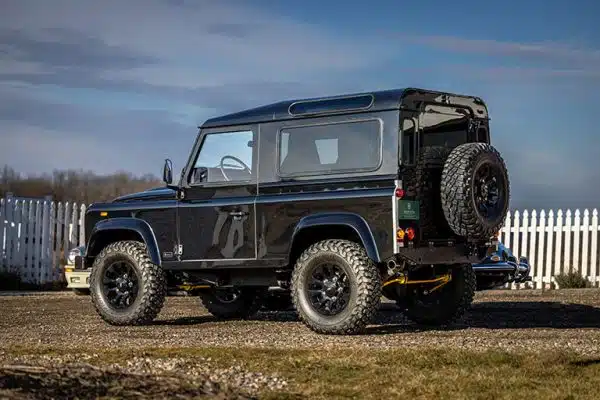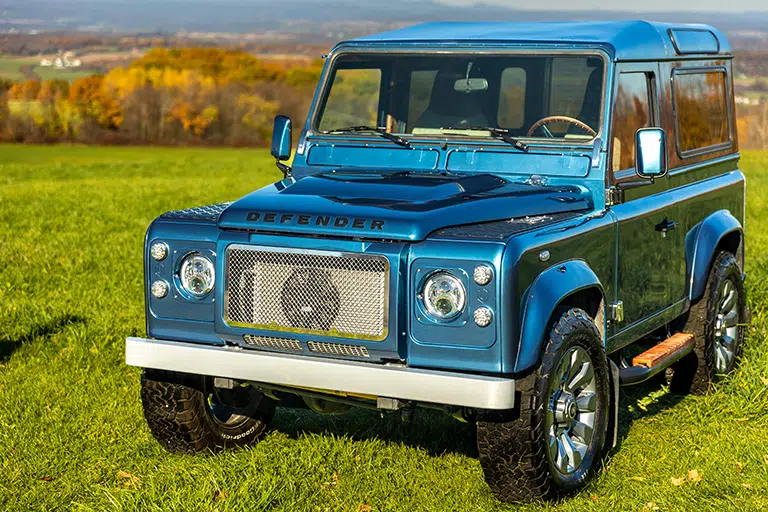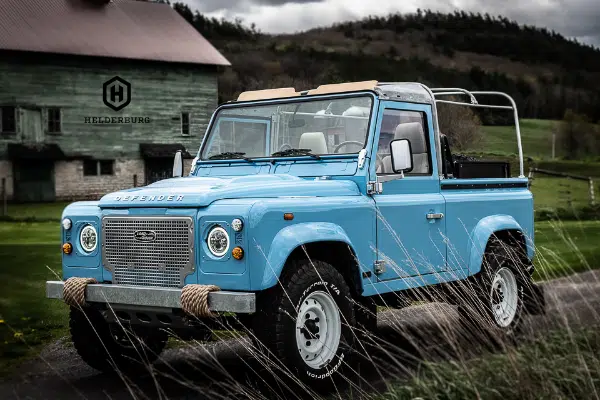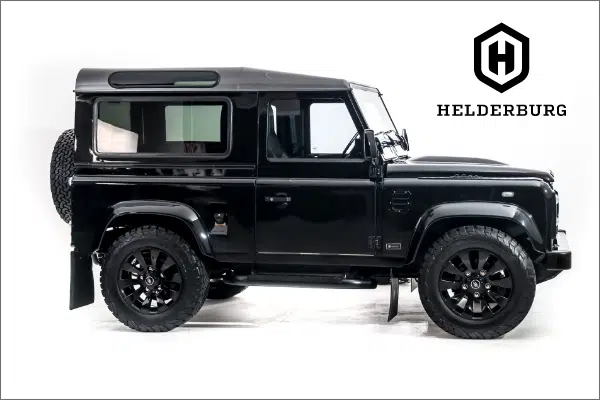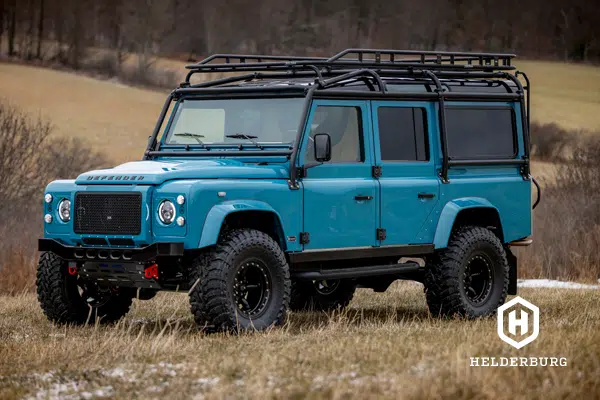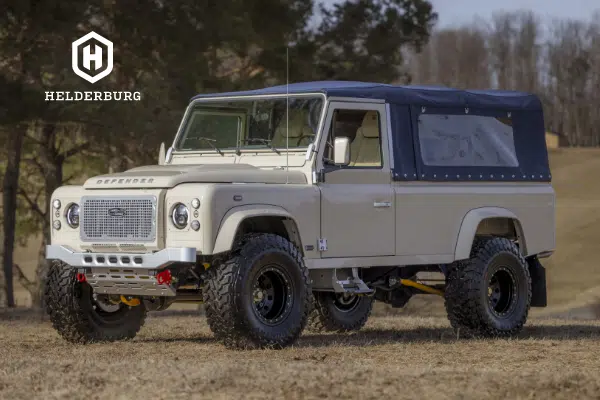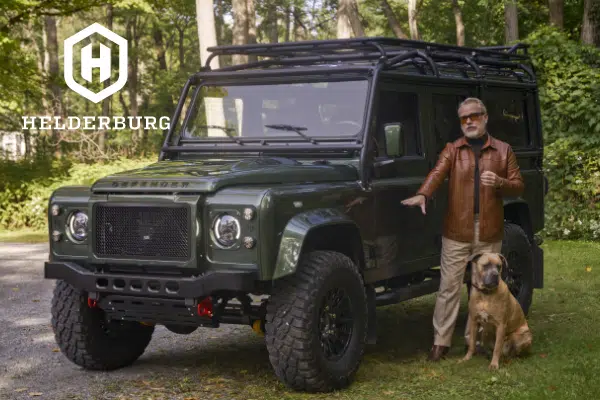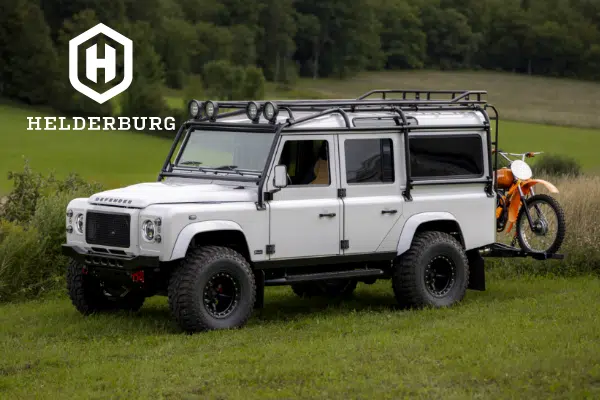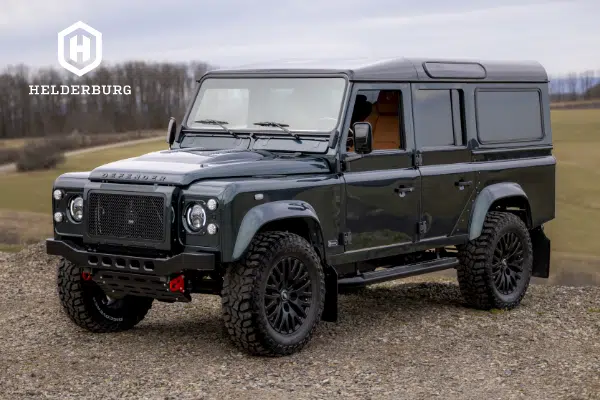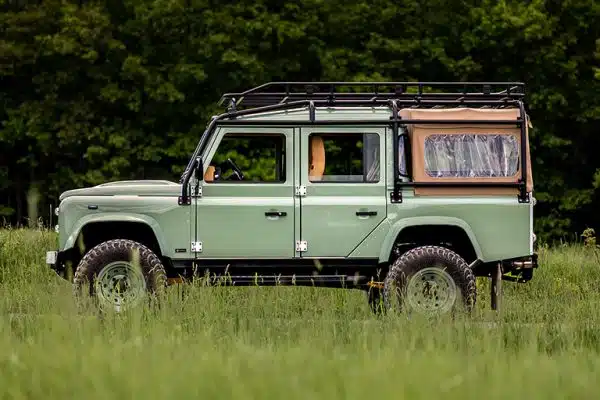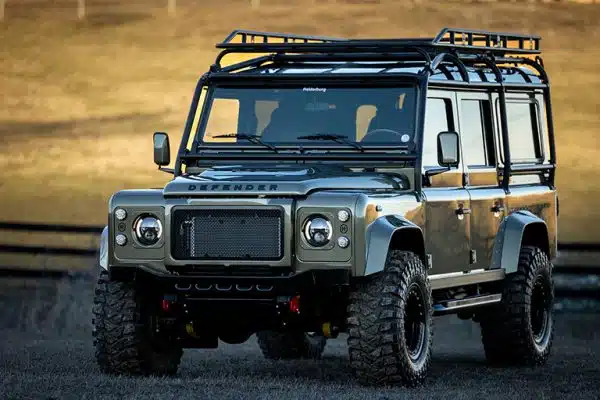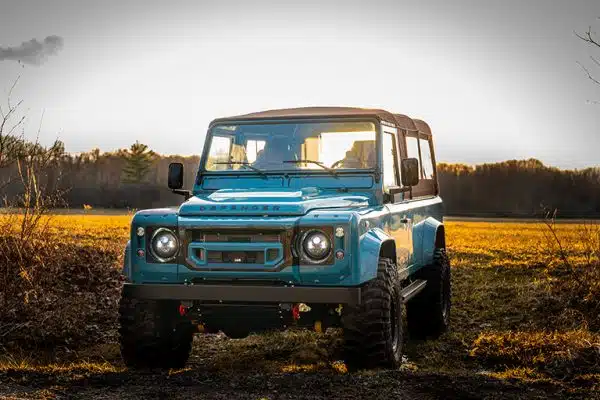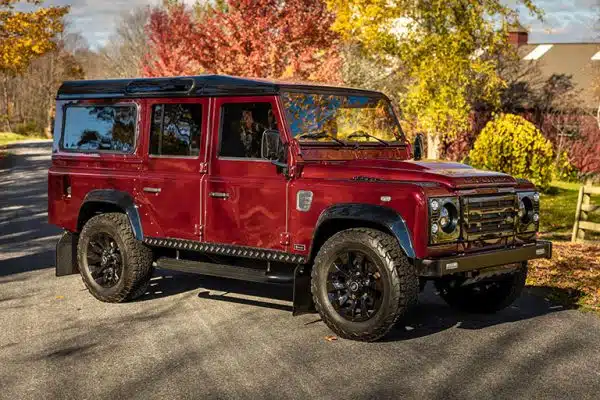


Helderburg Performance Tuned
Land Rover Defender D110 - Alvin
BUILD ONE LIKE THIS FOR:
$310,212
Investment
The Alvin Story
The Land Rover Defender D110: A Detailed Exploration
The Land Rover Defender D110, particularly models equipped with the 2.5 liter turbo diesel engine, holds a special place in automotive history. Explore the features, performance, and unique characteristics of these vehicles, highlighting their enduring appeal.
Exterior Aesthetics
The color of a Defender D110 significantly contributes to its appeal. A deep metallic brown with mahogany undertones, complemented by a sepia brown roof, presents a rare and visually striking combination. This color scheme, while uncommon in the automotive world, exudes a sense of rugged elegance, capturing attention and admiration.
Louvers cut into the bonnet (hood) serve a primarily aesthetic purpose. While offering no functional benefit, they enhance the vehicle’s rugged, utilitarian appearance. The Puma bonnet, a design introduced in 2007, is a common upgrade chosen for its visual appeal, further accentuating the Defender’s robust character.
The 2.5 Liter Turbo Diesel Engine
The 2.5 liter turbo diesel engine is a focal point of discussion among Defender enthusiasts. This engine choice provides a balance of power and reliability, making it suitable for a variety of driving conditions. It offers sufficient power and speed for both mountainous terrains and extended journeys. Paired with a five-speed manual transmission, it delivers an engaging driving experience that many drivers appreciate.
Reliability and Historical Context
The Land Rover brand, particularly the Defender, has faced questions regarding reliability, often linked to the history of British Leyland, the former parent company. However, the Defender has consistently proven itself as a robust and dependable vehicle, serving in demanding roles such as fire trucks, police cars, military vehicles, and tow trucks.
The 2.5 liter turbo diesel engine is known for its resilience and ability to operate on lower-quality fuel, making it a reliable choice for challenging environments.
Considerations Against Engine Swaps
Swapping the original engine for a high-performance option like an LS3 Corvette engine is a topic of interest for some Defender enthusiasts. However, several factors argue against this modification.
The Defender’s aerodynamic profile, often compared to that of a brick, limits the practical benefits of increased horsepower. Additionally, the absence of modern safety features like traction control and ABS makes managing such power challenging.
Preserving the original configuration is vital for maintaining the Defender’s value as a classic vehicle. Modifications like engine swaps can negatively impact its long-term appreciation.
Manual Transmission and Driving Dynamics
The five-speed manual transmission enhances the driving experience, providing a level of control and engagement that automatic transmissions cannot replicate. The engine’s torque allows for easy lugging, making it adaptable to various traffic conditions.
The fuel efficiency of the 2.5 liter turbo diesel engine is a notable advantage, achieving upper 20s to low 30s miles per gallon depending on driving conditions. This fuel efficiency makes it a practical choice for daily use and long-distance travel.
Four-Wheel Drive System
The Defender’s full-time four-wheel-drive system, complete with a transfer case, provides versatility for different driving conditions. The ability to lock the differential ensures that front and rear axles turn at the same speed, maximizing traction in slippery or winter conditions.
The transfer case offers four low and four high settings, with one mode locking everything together for maximum traction. This design makes the Defender a capable off-road vehicle ready to handle a variety of terrains.
Maintenance and Longevity
Maintaining a Defender with the 2.5 liter turbo diesel engine is generally straightforward and cost-effective. Routine maintenance typically includes oil changes and fuel filter replacements, with occasional valve adjustments.
The diesel engine’s design, which relies on compression rather than combustion, results in cooler operating temperatures and extended service life. It is not uncommon for these engines to reach significant mileage without major overhauls.
Historical Context and Evolution
Originally designed for agricultural use, the Land Rover has evolved into a vehicle that retains its utilitarian roots while also offering luxury features. The Defender’s body style has remained largely unchanged for over three decades.
The first 110 model was introduced in 1983, followed by the 90 model the following year. The name “Defender” was officially adopted in the late 1990s, coinciding with the launch of the Land Rover Discovery.
The numbers in the model names (110, 90, and 130) correspond to the wheelbase in inches.
Interior Design and Comfort
The interior design of the Defender focuses on comfort and functionality. Puma premium front seats offer comfort and versatility, suitable for long drives. The rear seats, often high-back premium seats, can accommodate multiple passengers.
Interior features include leather upholstery and Alcantara suede headliners, providing a touch of luxury. Sound deadening, thicker carpets, and insulation in the doors and roof contribute to a quieter and more comfortable cabin.
Right-Hand Drive Origins and Interior Space
The Defender was initially designed as a right-hand drive vehicle. When left-hand drive versions were introduced, the cabin layout was not re-tooled, resulting in slightly more space on the passenger side of left-hand drive models.
Suspension and Handling
Modifications like suspension lifts and off-road springs can enhance the Defender’s off-road capabilities. Tires such as BFGoodrich KM3 mud-terrain tires provide excellent traction in challenging conditions.
While modifications can improve off-road performance, they may also affect cornering ability. The Defender’s suspension and handling characteristics can be tailored to balance on-road and off-road performance.
Daily Drivability and Investment Value
The Defender can serve as a daily driver, offering a unique style and better fuel efficiency compared to some modern SUVs. Its appreciating value makes it an appealing investment for automotive enthusiasts.
Cabin Features and Security
The cabin may feature diamond-stitched leather upholstery, Puma seats, and options for rear seating configurations. Secure storage can be added.
Conclusion
The Land Rover Defender D110, especially when equipped with the 2.5 liter turbo diesel engine, represents a blend of automotive history, rugged capability, and timeless design. Its unique features and enduring appeal make it a standout vehicle.
Features:
300 TDI Helderburg Performance Tuned
5 Speed Manual Transmission
Suspension Lifted
Helderburg Performance Brakes
300 TDI Helderburg Performance Tuned
Bespoke Leather in Cashmere and Chestnut with Diamond Stitch
Color: Schwarzkopf Metallic
Bonnet Louvers
Helderburg Billet Door Handles

